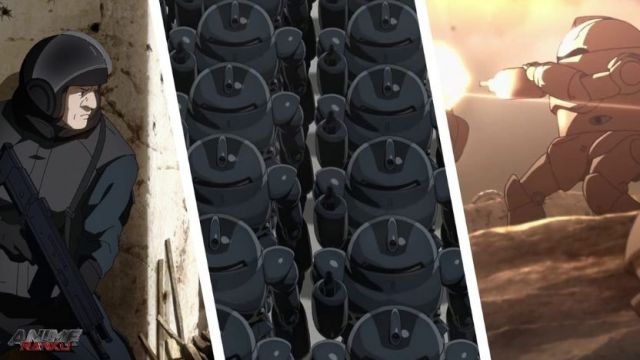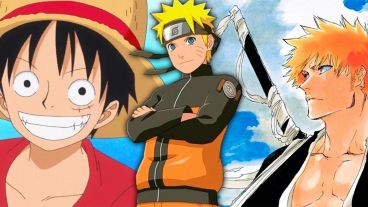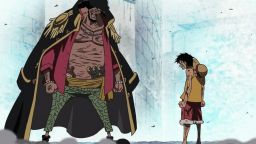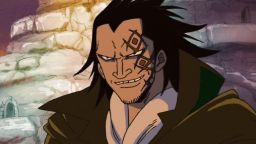Highlights
- The 39th Central Asian War was caused by the aggressive expansion of the Kingdom of Persia, led by dictator Darius XIV, who aimed to dominate Central Asia through combat-specialized robots.
- Despite the lack of evidence of robots of mass destruction in the Persian Kingdom, major superpowers like the United States of Thracia decided to intervene, leading to the brutal war with huge robotic armies.
- The war left devastation and trauma in its wake, with the Kingdom of Persia in ruins and countless innocent lives lost. Soldiers and robots involved in the war suffer from PTSD and regret, while others seek vengeance for the tragedy caused.
The central plot of Pluto revolves around a diligent detective robot determined to apprehend a serial killer who has ruthlessly targeted the most influential robots worldwide. However, the narrative delves deeper, tracing its origins to a pivotal event predating the series. This event, the 39th Central Asian War, was a seismic occurrence that profoundly impacted the entire world, detrimentally altering the destinies of numerous individuals and robots.
Despite its profound influence on the storyline, the characters in Pluto seldom engage in extensive discussions about the war. Instead, they sporadically touch upon various events from the war throughout the series. This provides an opportunity to consolidate the fragmented information and explore the onset of the war, its unfolding events, and the aftermath of the 39th Central Asian War.
The Cause of the 39th Central Asian War
BORA's Fact-Finding Mission Leads to Disaster
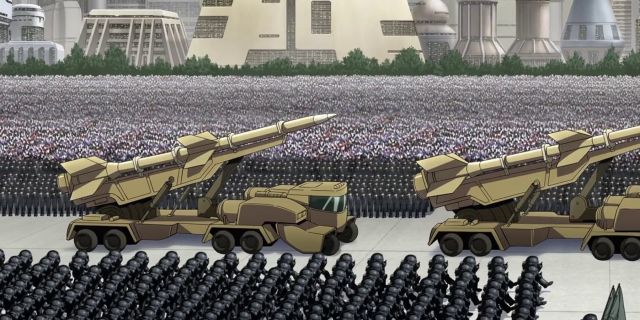
The origins of the conflict sprouted when Darius XIV, the leader of the Kingdom of Persia, aggressively expanded military power by mass-producing specialized combat robots. Driven by a longstanding desire to broaden Persia's sphere of influence, Darius, upon assuming absolute dictatorial control, seized the opportunity to fulfill his ambition. Swiftly, the Kingdom of Persia unleashed armies of combat-ready robots, launching relentless attacks on neighboring Central Asian countries.
Simultaneously, President Alexander of the United States of Thracia convened a United Nations meeting to address the global leaders. The agenda included a proposal to prohibit the development of mass-destruction robots. Following unanimous agreement on the treaty, President Alexander turned attention to Darius XIV, accusing the Persian dictator of concealing weapons of mass destruction. Rallying international support, he urged collective intervention to prevent further catastrophe.
Before mobilizing their military forces, world leaders opted to dispatch a delegation comprising leading scientists, scholars, and renowned journalists, including Dr. Ochanomizu (creator of Uran) and Dr. Hoffman (creator of Gesicht). Their mission, as the BORA Fact-Finding Team, aimed to substantiate the accusations leveled by the United States of Thracia. However, during the fact-finding expedition, the team found no evidence supporting the existence or development of mass-destruction robots by the Persian Kingdom. Instead, they discovered a disconcerting scene—a multitude of destroyed robot remains concealed in the depths of an abandoned temple's basement.
Total Destruction
The Seven Strongest Robots Join the Battlefield
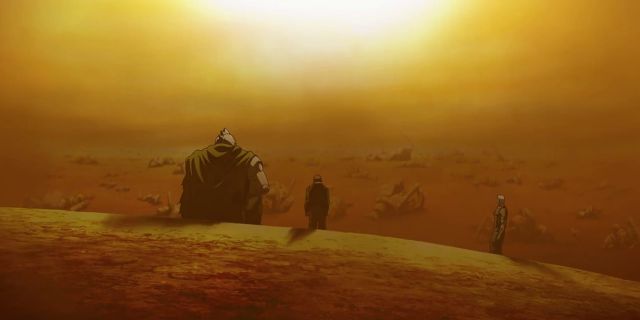
Unfortunately, despite the Bora Fact-Finding Mission although it couldn’t find any proof of the existence of robots of mass destruction in the Kingdom of Persia, the United States of Thracia and other major superpowers decided to intervene anyway. Before the group even concluded their report, those countries were already prepared to mobilize their troops, both robots and human soldiers alike, to the Kingdom of Persia. And that was when the true 39th Central Asian War began.
It’s unclear why the United States of Thracia and its allies decided to launch the attack against the Kingdom of Persia. Some say it was to prevent further casualties, while others say that it was to prevent Persia from obtaining a massive firepower rivaling what these superpowers had. One thing’s for sure, in the months to come, Central Asia experienced the most brutal war in the history of the world. Most of the battles were between the huge robotic army from the Persian Kingdom against the combined robotic army from numerous major superpowers that rallied under the United States of Thracia. But there were also numerous skirmishes happening around the country involving robots and human soldiers alike.
To help the war effort, various countries also deployed their most advanced robots as part of the peacekeeping forces. Brando from Turkey, Hercules from Greece, Montblanc from Switzerland, and North No. 2 from Scotland as part of the frontline soldiers. Gesicht from Germany was part of a counter-terrorism force along with other human soldiers, while Atom from Japan was appointed as a peace ambassador who was sent near the end of the war.
The only robot from the Seven Most Powerful Robots in the world that didn’t go to war was Epsilon from Australia. He refused to take part in such a senseless carnage. But even then, he was still forced to be part of the clean-up effort where he had to destroy countless robot body parts and other remnants of the war.
What Happened After the War
Years Worth of Grief, Regret, and Anger Lead to Even More Tragedy
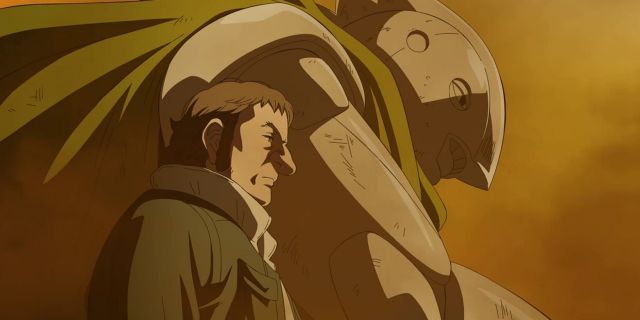
Once the Kingdom of Persia’s military had been completely decimated by the ally’s forces, Darius XIV was arrested and put in a maximum security prison that was overseen directly by the United States of Thracia. At that point, the 39th Central Asian War had officially ended. Unfortunately, the devastating aftermath of the war still lingers to this day.
The Kingdom of Persia was left on the brink of absolute destruction. The new government is in the middle of a rebuilding effort right now, but the overwhelming majority of the country is still in ruins. Not only that, countless innocent Persian people also lost their lives during the war. And for those who are lucky enough to stay alive, they have to deal not only with the loss of their loved ones but also with the terrible nightmares and trauma caused by war.
The situation is not sunshine and rainbows either for the allied forces. Many soldiers involved in the war are still recovering from the PTSD. Even some of the robots involved in the war, such as Montblanc and North No. 2, can’t fully recover from the terrible things they’ve seen or been forced to do. The fact that their memories will be there forever unless they decide to consciously delete them only adds to their internal suffering.
Looking back on it now, there are lots of people who regret ever taking part in the 39th Central Asian War. This is a sentiment that is not only held by the humans involved in the war, such as Dr. Ochanomizu and Dr. Hoffman but also by the robots who were forced to fight in the war, such as Hercules and Brando. On the other end of the spectrum, there are also those who wish to exact vengeance on the world. The grief, anger, and frustration left by the war proved to be the fuel that would lead somebody to kill the most advanced robots in the world and set the world on fire.
Pluto is available to stream on Netflix.
